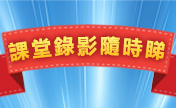�ҵ{�W�١GCC - Certified in Cybersecurity ��ڻ{�i�Үѽҵ{
- ²�١GCybersecurity Training Course |
Domain 1: Security Principles
- Understand the security concepts of information assurance
- Confidentiality
- Integrity
- Availability
- Authentication (e.g., methods of authentication, multi-factor authentication (MFA))
- Non-repudiation
- Privacy
- Understand the risk management process
- Risk management (e.g., risk priorities, risk tolerance)
- Risk identification, assessment and treatment
- Understand security controls
- Technical controls
- Administrative controls
- Physical controls
- Understand (ISC)2 Code of Ethics
- Professional code of conduct
- Understand governance processes
- Policies
- Procedures
- Standards
- Regulations and laws
Domain 2: Business Continuity (BC), Disaster Recovery (DR) & Incident Response Concepts
- Understand business continuity (BC)
- Purpose
- Importance
- Components
- Understand disaster recovery (DR)
- Purpose
- Importance
- Components
- Understand incident response
- Purpose
- Importance
- Components
Domain 3: Access Controls Concepts
- Understand physical access controls
- Physical security controls (e.g., badge systems, gate entry, environmental design)
- Monitoring (e.g., security guards, closed-circuit television (CCTV), alarm systems, logs)
- Authorized versus unauthorized personnel
- Understand logical access controls
- Principle of least privilege
- Segregation of duties
- Discretionary access control (DAC)
- Mandatory access control (MAC)
- Role-based access control (RBAC)
Domain 4: Network Security
- Understand computer networking
- Networks (e.g., Open Systems Interconnection (OSI) model, Transmission Control Protocol/Internet Protocol (TCP/IP) model, Internet Protocol version 4 (IPv4), Internet Protocol version 6 (IPv6), WiFi)
- Ports
- Applications
- Understand network threats and attacks
- Types of threats (e.g., distributed denial-of-service (DDoS), virus, worm, Trojan, man-in-the-middle (MITM), side-channel)
- Identification (e.g., intrusion detection system (IDS), host-based intrusion detection system (HIDS), network intrusion detection system (NIDS))
- Prevention (e.g., antivirus, scans, firewalls, intrusion prevention system (IPS))
- Understand network security infrastructure
- On-premises (e.g., power, data center/closets, Heating, Ventilation, and Air Conditioning (HVAC), environmental, fire suppression, redundancy, memorandum of understanding (MOU)/memorandum of agreement (MOA))
- Design (e.g., network segmentation (demilitarized zone (DMZ), virtual local area network (VLAN), virtual private network (VPN), micro-segmentation), defense in depth, Network Access Control (NAC) (segmentation for embedded systems, Internet of Things (IoT))
- Cloud (e.g., service-level agreement (SLA), managed service provider (MSP), Software as a Service (SaaS), Infrastructure as a Service (IaaS), Platform as a Service (PaaS), hybrid)
Domain 5: Security Operations
- Understand data security
- Encryption (e.g., symmetric, asymmetric, hashing)
- Data handling (e.g., destruction, retention, classification, labeling)
- Logging and monitoring security events
- Understand system hardening
- Configuration management (e.g., baselines, updates, patches)
- Understand best practice security policies
- Data handling policy
- Password policy
- Acceptable Use Policy (AUP)
- Bring your own device (BYOD) policy
- Change management policy (e.g., documentation, approval, rollback)
- Privacy policy
- Understand security awareness training
- Purpose/concepts (e.g., social engineering, password protection)
- Importance
The course content above may change at any time without notice in order to better reflect the content of the examination.
|


